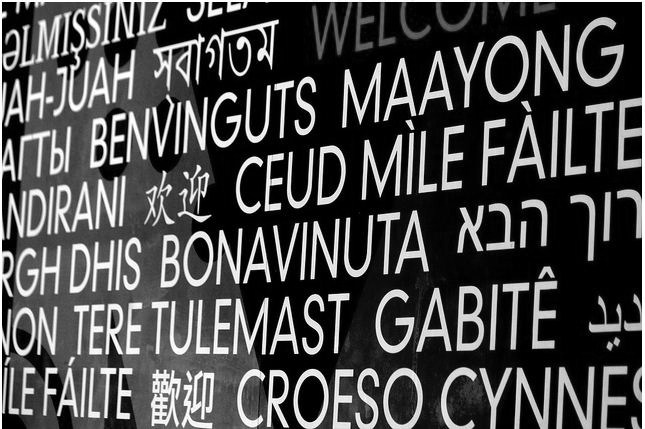| |
 Traditional print texts highly value linear communication and thus, a sameness that is also found in standard academic English. The similarities between the rise of homogenous, linear texts in the classroom likely coincides with the emergence of standard academic English as the most valued dialect and the language that permeates our college composition classrooms. We can distance our students from the notion that standard academic English—an inherently linear language that focuses on sameness—is the only correct dialect. With the rise of new technologies and Web 2.0, we should adjust our pedagogical practices to embrace nonlinear texts in our pedagogy. Having our students engage in acts of multimodal composing, such as using visuals to create literacy narratives, or by having students read or view recordings of authors who write in dialects, allows our students to embrace their language and cultural histories. Traditional print texts highly value linear communication and thus, a sameness that is also found in standard academic English. The similarities between the rise of homogenous, linear texts in the classroom likely coincides with the emergence of standard academic English as the most valued dialect and the language that permeates our college composition classrooms. We can distance our students from the notion that standard academic English—an inherently linear language that focuses on sameness—is the only correct dialect. With the rise of new technologies and Web 2.0, we should adjust our pedagogical practices to embrace nonlinear texts in our pedagogy. Having our students engage in acts of multimodal composing, such as using visuals to create literacy narratives, or by having students read or view recordings of authors who write in dialects, allows our students to embrace their language and cultural histories.
|

 Traditional print texts highly value linear communication and thus, a sameness that is also found in standard academic English. The similarities between the rise of homogenous, linear texts in the classroom likely coincides with the emergence of standard academic English as the most valued dialect and the language that permeates our college composition classrooms. We can distance our students from the notion that standard academic English—an inherently linear language that focuses on sameness—is the only correct dialect. With the rise of new technologies and Web 2.0, we should adjust our pedagogical practices to embrace nonlinear texts in our pedagogy. Having our students engage in acts of multimodal composing, such as using visuals to create literacy narratives, or by having students read or view recordings of authors who write in dialects, allows our students to embrace their language and cultural histories.
Traditional print texts highly value linear communication and thus, a sameness that is also found in standard academic English. The similarities between the rise of homogenous, linear texts in the classroom likely coincides with the emergence of standard academic English as the most valued dialect and the language that permeates our college composition classrooms. We can distance our students from the notion that standard academic English—an inherently linear language that focuses on sameness—is the only correct dialect. With the rise of new technologies and Web 2.0, we should adjust our pedagogical practices to embrace nonlinear texts in our pedagogy. Having our students engage in acts of multimodal composing, such as using visuals to create literacy narratives, or by having students read or view recordings of authors who write in dialects, allows our students to embrace their language and cultural histories.

